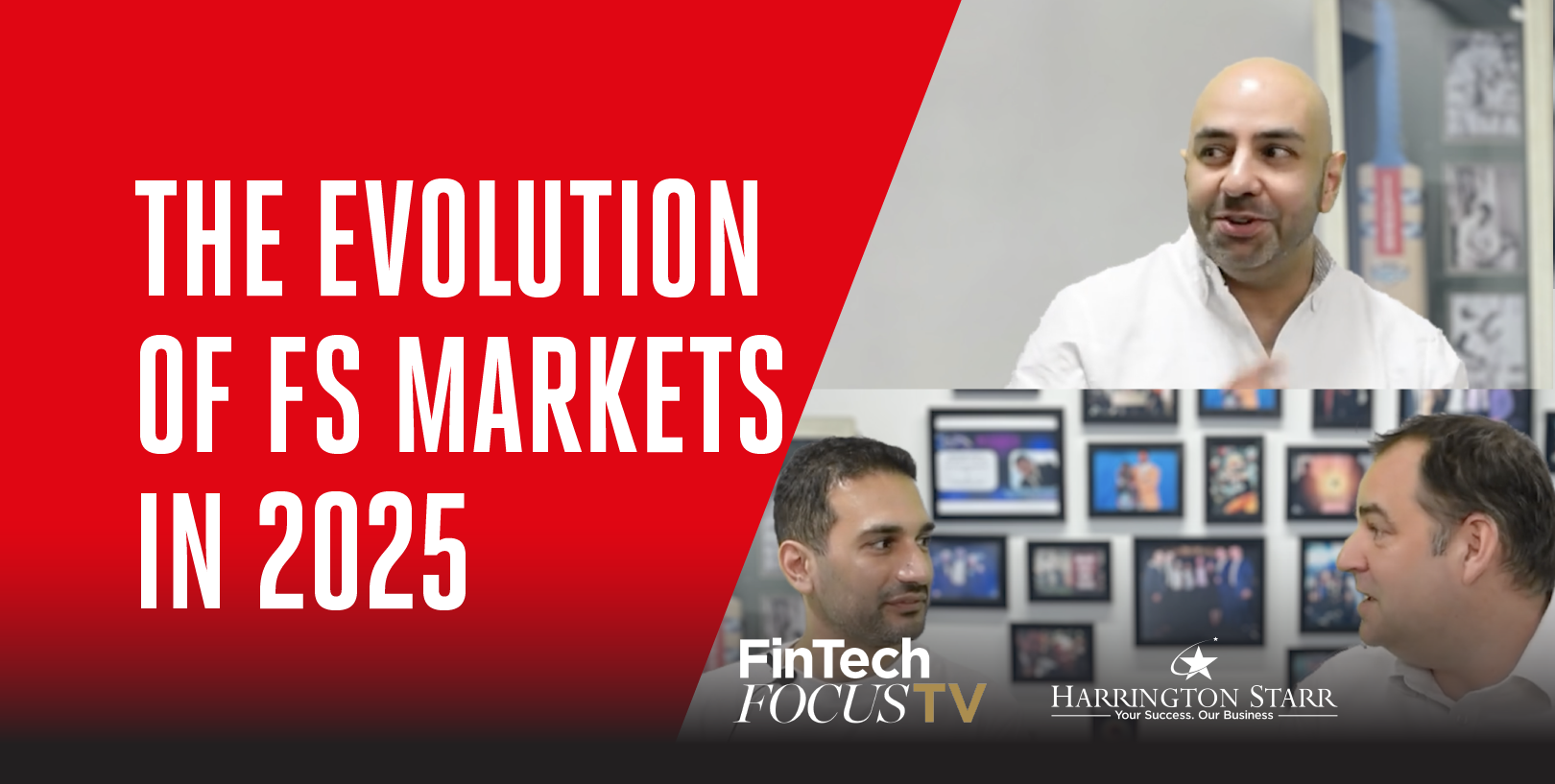
The Evolution of Trading Strategies
In the latest episode of FinTech Focus TV, host Toby Babb is joined by three distinguished experts in financial markets and trading technology: Himesh Soneji, Managing Director at Tech Advocates, Asim Farooq, Business Development at a Proprietary Trading Firm, and Rob Lane, Global Head of Business Execution, Low Latency at LSEG (London Stock Exchange Group). Together, they engage in a deep discussion about the evolving landscape of trading strategies, the role of AI in financial markets, and the increasing importance of quality over pure speed in execution.
Shifting from Speed to Quality: The Changing Face of Trading
Historically, the financial trading landscape has been dominated by a race to zero latency, where speed was the defining factor of success. However, as the discussion unfolds, it becomes clear that the industry is undergoing a significant transformation. Himesh Soneji explains how trading firms are shifting focus from ultra-high-frequency strategies to more methodical, data-driven approaches. The modern trading environment is no longer solely about being the fastest; it's about harnessing high-quality data, refining execution strategies, and making well-informed trading decisions.
This shift does not mean that speed has become irrelevant. Rather, the balance between latency and execution quality has become the primary focus for firms looking to remain competitive in the global financial markets. The industry has matured, with firms recognising that superior market data analysis and strategic execution provide long-term advantages over simply being the first to react.
The Role of AI and Advanced Analytics in Financial Markets
With the rise of AI and machine learning, financial firms are increasingly leveraging algorithmic decision-making and predictive analytics. Asim Farooq discusses how firms are using AI to extract valuable insights from market data, applying quantitative analysis and automated models to make more accurate predictions. This evolution is shifting firms away from relying purely on latency-sensitive trades towards sophisticated, systematic trading approaches that analyse complex datasets across multiple instruments.
AI is not just improving speed but also enhancing accuracy. Firms are deploying large language models (LLMs) and machine learning algorithms to interpret real-time financial news, predict market movements, and refine their trading strategies. The ability to incorporate alternative data sources, such as news sentiment analysis, social media trends, and economic indicators, is reshaping how trading desks operate. AI-driven models can identify hidden patterns and correlations that were previously impossible to detect using traditional methodologies.
Low Latency and Market Infrastructure: The Competitive Edge
While firms are increasingly focusing on data quality, low latency still plays a crucial role in execution strategies. Rob Lane highlights how firms operating in the financial markets must maintain a balance between speed and quality. Even as AI-driven strategies become more prevalent, latency-sensitive execution remains essential in certain markets, particularly in highly competitive exchanges like Eurex. Firms must ensure that their infrastructure supports both real-time data processing and historical data analysis to maintain a competitive advantage.
Many firms are also investing in co-location services and FPGA technology to optimise their trading infrastructure. The discussion highlights how technology providers are offering innovative solutions to improve order execution speed, minimise slippage, and ensure consistent market data feeds.
Global Market Expansion: Trading Beyond Traditional Borders
The conversation then shifts to the globalisation of financial markets, with increasing interest in emerging regions like China, India, and Saudi Arabia. Rob Lane shares insights from his recent travels to Asia, emphasising the growing demand for access to international market data from firms in China and India. As global markets evolve, firms are looking to expand their trading operations into new geographies, regulatory frameworks, and trading infrastructures. This expansion presents both opportunities and challenges, as firms navigate complex compliance landscapes while seeking to capitalise on untapped market potential.
International exchanges are becoming more accessible, yet firms must deal with regulatory constraints, currency risks, and geopolitical uncertainties. The rise of algorithmic trading in emerging markets signals that firms are keen to diversify their exposure and explore new liquidity pools beyond traditional Western markets.
The Rise of Medium-Frequency Trading Strategies
One of the most interesting trends discussed in the episode is the rise of medium-frequency trading. Asim Farooq explains how firms are adapting their strategies to focus on longer alpha durations, integrating more sophisticated statistical models, and executing trades over extended time horizons. Instead of engaging in hyper-fast, high-frequency trading, firms are investing in robust infrastructure, advanced data processing capabilities, and AI-driven analytics to refine their strategies and enhance execution efficiency.
Market Data Integrity and Stability: The Need for High-Quality Feeds
Another key theme explored in this episode is the importance of market data integrity and stability. Himesh Soneji discusses the critical role of high-quality market feeds in trading success. Inaccurate or incomplete data can distort trading models, impact decision-making, and introduce significant risks. Firms are investing heavily in ensuring that their market data providers deliver clean, reliable, and comprehensive datasets. Without access to accurate historical and real-time market data, trading strategies become ineffective, and firms risk losing their competitive edge.
Navigating Political and Regulatory Shifts in Global Markets
Political and regulatory changes also play a significant role in shaping financial markets. The panel discusses how recent regulatory developments, economic policies, and market shifts impact trading strategies and market access. Himesh Soneji points to recent comments from major financial firms questioning the attractiveness of listing in London, as regulatory constraints and liquidity concerns push firms towards US and Asian exchanges. Rob Lane adds that exchanges are working hard to enhance market access, provide more sophisticated trading solutions, and attract institutional investors.
The Future of Market Infrastructure: Innovation and Adaptation
Looking ahead to 2025, the panellists explore how trading firms and market infrastructure providers will need to adapt to ongoing technological advancements. Himesh Soneji predicts a continued focus on GPU-driven computing, enhanced data centralisation, and more efficient data-processing frameworks. Rob Lane emphasises the need for financial firms to invest in scalable, cloud-based data solutions to manage the increasing volume of market data while maintaining execution speed and precision. Asim Farooq highlights the growing relevance of sponsored access venues and FPGA-based execution strategies, enabling firms to refine their algorithmic trading models and market execution efficiency.
Final Thoughts: The Road Ahead for Trading Firms
As the episode wraps up, the key takeaway is clear: the financial trading landscape is evolving rapidly. Firms that embrace AI, data-driven decision-making, and scalable trading infrastructure will be best positioned to succeed. FinTech recruitment businesses like Harrington Starr play a crucial role in helping firms find top talent in quantitative finance, market data analysis, and algorithmic trading. As market demands evolve, recruitment will be essential in ensuring that firms have the right expertise to navigate regulatory challenges, optimise trading strategies, and leverage cutting-edge technology.
The latest episode of FinTech Focus TV offers an in-depth look at the trends shaping the future of financial markets. Whether it’s AI-driven trading, market expansion, low-latency execution, or regulatory changes, firms must stay ahead of the curve to remain competitive. Watch the full episode to gain exclusive insights from Himesh Soneji, Asim Farooq, and Rob Lane, and stay tuned for more discussions on the future of FinTech and trading technology.
This episode of FinTech Focus TV is particularly relevant to Harrington Starr as a FinTech recruitment company, as it highlights the evolving skill sets and expertise required in the financial trading sector. The discussion with Himesh Soneji, Asim Farooq, and Rob Lane underscores the rapid advancements in AI-driven trading, low-latency execution, and global market expansion, all of which demand highly specialised talent.
As trading firms shift from pure speed-based strategies to data-driven and AI-enhanced decision-making, there is an increasing demand for professionals with expertise in quantitative finance, algorithmic trading, market infrastructure, and advanced analytics. Companies are seeking individuals who understand machine learning models, statistical execution strategies, and the complexities of financial regulations across different markets.
For Harrington Starr, this discussion reinforces the importance of connecting top-tier trading, quant, and technology professionals with firms looking to innovate in the financial markets. As the industry navigates new geographies, regulatory landscapes, and technological advancements, recruitment plays a crucial role in ensuring companies have the right talent to remain competitive. This episode reflects how the future of FinTech recruitment is about understanding market trends, bridging the talent gap, and supporting firms in their growth strategies.





